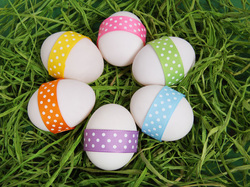
...but there's something about dyeing eggs that takes me back to childhood memories of sitting on tall stools around the kitchen counter, dunking eggs with those flimsy metal dippers.
So I just have to dye eggs.
(If you want to color eggs using natural dyes, there's a link at the bottom to a previous post.)
Why, though, do all instructions seem to call for using vinegar? Some of the newer kits have the vinegar built in to the tablets, but it's still there. What does it do?
I ran some searches, did some experimenting, and here's what I've learned:
Several people online said it's to make the dye darker. Someone else said you could use salt instead. So I started looking into the science of why.
Vinegar is acidic. Egg shells are mostly calcium carbonate, which is alkaline. Put them together, and they react, dissolving some of the egg shell. I put a hardboiled egg into straight vinegar and left it overnight. In the morning, only a thin layer of shell remained, and by late afternoon, there was no more shell; only the flexible inner membrane was left.
Adding vinegar to the dye bath helps etch the shell, roughening the surface (increasing surface area) and thus allowing it to receive more dye.
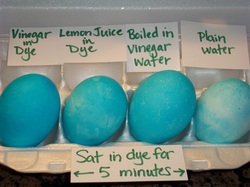
The deepest, most even color was from vinegar in the dye, followed closely by the eggs boiled in vinegar water. Lemon juice did pretty well but yielded more color marbling. The dye using plain water (no acid) gave me a much paler and less evenly colored egg.
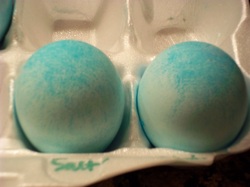
So I'll go back to vinegar when I want deeply colored eggs. Here are the amounts I used:
1 cup water
10 drops liquid food color (you can use less)
1 Tbsp. vinegar (or lemon juice)
Or, to restrict the smell of vinegar to a one-time boil, add 1/4 c. vinegar in 1 quart of water, hardboil as usual. I'll tell my kids they can either stay inside where the smell is, or go outside and pull weeds...
Happy coloring!
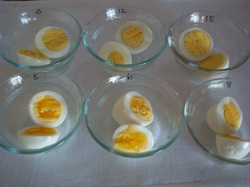
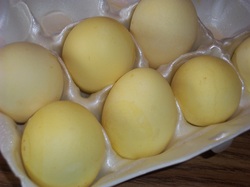
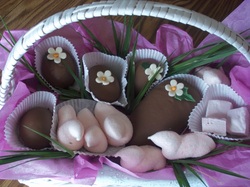
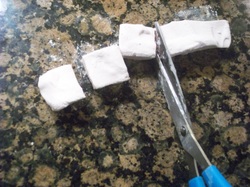
 RSS Feed
RSS Feed